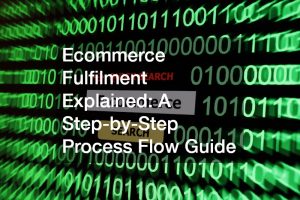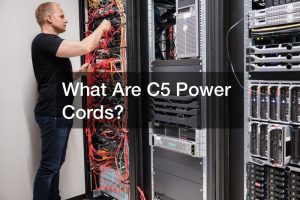
Ecommerce fulfilment is a crucial aspect of online retail, encompassing the entire process from order placement to delivery. A streamlined fulfilment process ensures customer satisfaction and helps businesses maintain a competitive edge. This guide will explore the step-by-step process of ecommerce fulfilment and highlight the importance of using a 3PL e-commerce order fulfilment service.
Understanding Ecommerce Fulfilment
Ecommerce fulfilment involves several key stages, including inventory management, order processing, picking and packing, shipping, and delivery. Each stage is essential for ensuring that customers receive their orders promptly and accurately.
For businesses, having an efficient fulfilment strategy can lead to increased sales and improved customer loyalty.
Step 1: Order Placement
The ecommerce journey begins when a customer places an order on your website. This could be through various methods, such as searching for a product, browsing categories, or taking advantage of promotional offers. Once the customer confirms their purchase, the order details are recorded in the system, setting off a chain of events in the fulfilment process.
Step 2: Inventory Management
Effective inventory management is critical in ecommerce fulfilment. Businesses must track their stock levels to ensure they can meet customer demand. This involves monitoring inventory in real-time, forecasting demand, and reordering products as necessary. Many businesses turn to 3PL ecommerce order fulfilment services to help manage their inventory efficiently, leveraging their expertise and technology to maintain optimal stock levels.
Step 3: Order Processing
After an order is placed, the next step is order processing. This includes verifying the order details, checking inventory availability, and confirming payment. Efficient order processing is vital for reducing the time it takes to fulfil an order, directly impacting customer satisfaction. A robust order management system can streamline this process, automating many of the tasks involved.
Step 4: Picking and Packing
Once the order is confirmed, the next step is picking the items from the warehouse. Warehouse staff locate the products and prepare them for shipment. This process can be time-consuming, especially for businesses with a large inventory. To enhance efficiency, many companies employ techniques such as batch picking or zone picking, where multiple orders are picked simultaneously.
After picking, the items are packed securely to prevent damage during transit. Packaging plays a crucial role in customer satisfaction; well-packaged products reflect positively on the brand. Businesses often use branded packaging to enhance their visibility and provide a memorable unboxing experience for customers.
Step 5: Shipping
With the order packed, it’s time to ship it to the customer. Shipping involves selecting the appropriate carrier, determining shipping costs, and generating shipping labels. Businesses must choose shipping methods that balance cost and speed, as customers increasingly expect quick delivery times.
Many ecommerce businesses partner with 3pl e-commerce order fulfillment services to manage their shipping needs. These providers often have established relationships with various carriers, allowing them to offer competitive rates and faster shipping options.
Step 6: Delivery
The final step in the ecommerce fulfilment process is delivery. Once the order is shipped, customers can track their packages through tracking numbers provided by the carrier. Timely delivery is crucial for customer satisfaction; delays can lead to frustration and negative reviews.
Businesses can enhance their delivery processes by offering multiple delivery options, such as standard, express, and same-day delivery. Providing customers with choices allows them to select the option that best suits their needs.
Step 7: Returns Management
An essential aspect of ecommerce fulfilment that is often overlooked is returns management. Customers may want to return items for various reasons, including product defects or dissatisfaction. A clear and efficient return process is vital for maintaining customer trust and loyalty.
Businesses should provide easy-to-follow return instructions and pre-paid return labels to simplify the process for customers. Many ecommerce fulfilment solutions include returns management as part of their service, streamlining the process and reducing the workload on in-house teams.
Conclusion
Ecommerce fulfilment is a multifaceted process that requires careful planning and execution. By understanding each step of the process, businesses can enhance their fulfilment strategies, improve customer satisfaction, and drive sales. Utilizing 3PL ecommerce order fulfilment services can further streamline operations, allowing companies to focus on their core competencies while leveraging the expertise of fulfilment specialists.
In today’s competitive e-commerce landscape, investing in an efficient fulfilment process is not just an option; it is essential for success.
.




